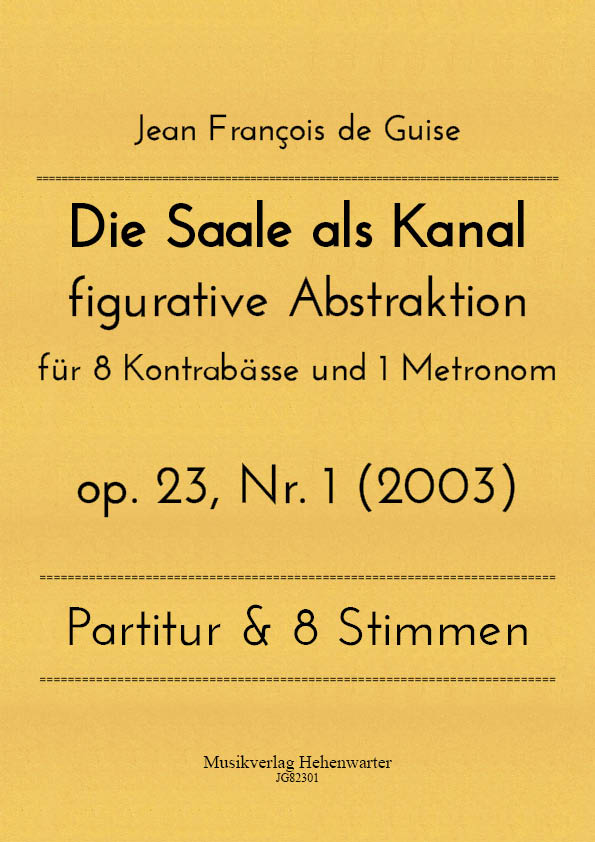€21.00*
Available, delivery time: 1-3 days
Product information "Guise, Jean François de - Die Saale als Kanal figurative abstraction op. 23, No. 1 (2003)"
Guise Jean François de
Die Saale als Kanal
figurative abstraction
for 8 double basses and 1 metronome
op. 23, no. 1 (2003)
This work was commissioned by the double bass player and artistic director of the Bass Violin Gala, Ingo Burghausen, in 2003 and premiered the same year.
Since one of the venues is Bernburg/Saale, it has always been "good manners" for the folk song "An der Saale hellen Strande" to be intoned at the opening.
After the "Wende", there were repeated attempts to make the Elbe and Saale rivers, which were still largely in their natural state, permanently navigable, which would result in their conversion to dead canals interrupted by barrages.
Such a proposal came up again in 2003. Broad sections of the population, across parties and social classes, revolted against it. After all, there would have been nothing left of the Saale's bright beaches, lined with proud castles.
For this reason, Ingo Burghausen turned to Jean François de Guise. Both musicians agreed to take a stand with a musical protest and, contrary to tradition, to use the opening piece for this purpose.
The composition is thus based on the folk song, whose melodic fragments run through the piece, but are constantly fragmented, counteracted and alienated. The special feature of the Bass Violin Gala, however, is that international virtuosos of the double bass stand side by side on stage with orchestra musicians, professors and students, i.e. also beginners, and show what the double bass is capable of.
This challenge should also be taken into account in the present piece. That is why de Guise decided to divide the piece into 2 groups. In the first quartet there are parts to be played by beginners and advanced players, and the second quartet, staffed by the professionals, was given the much more difficult part. In addition, a constantly ticking metronome is used, which works unflinchingly, symbolizing the passing of time, against the meter of the players.
Today we all know how right the initiator and composer were with their objection, which makes the work still highly topical and important.
score & 8 parts / 30 pages
| Composer:: | Guise, Jean François de |
|---|---|
| Instrumentations:: | Oktette und Doppelquartette, String octets |
| Issue type:: | New edition |







